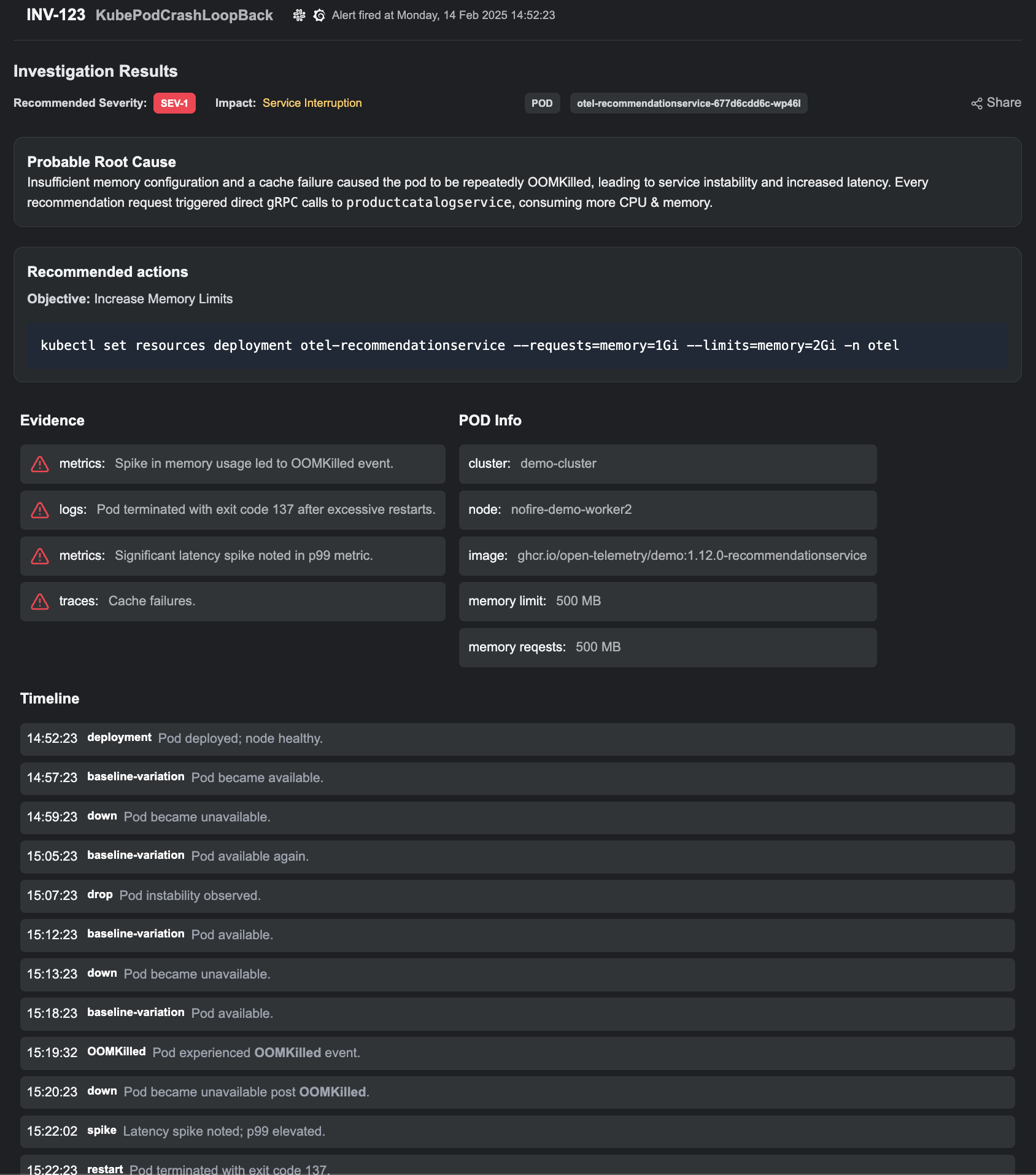CrashLoopBackOff: More Than Just a Bad Deployment
Uncovering the real root cause is hard. Agentic AI incident response team resolves incidents faster.

Spiros Economakis
Founder & CEO

Uncovering the real root cause is hard. Agentic AI incident response team resolves incidents faster.

Spiros Economakis
Founder & CEO

Kubernetes troubleshooting isn’t just about spotting a failing pod—it’s about uncovering why it’s failing in the first place. While identifying a CrashLoopBackOff is easy, getting to the real root cause is often anything but.
Traditional debugging methods force on-call teams to dig through logs, metrics, traces, and multiple dashboards to reconstruct the failure, while ephemeral pods take critical clues with them when they restart. Kubernetes’ own alerting often adds to the noise, making it easy to miss the real problem hidden beneath surface-level failures.
Pods restart all the time—it’s part of Kubernetes’ self-healing nature. But how do you tell the difference between a transient issue and an underlying system-wide failure? With limited context, engineers often chase false positives, only to realize later that a deeper issue—like cache failures or resource starvation—was causing the pod crashes all along.
A pod that crashes takes its runtime state with it, resetting memory and leaving little trace of what actually went wrong. By the time you investigate, the original condition that triggered the failure may be long gone. Traditional troubleshooting methods require engineers to piece together logs, metrics, and traces manually—often while juggling multiple dashboards.
Kubernetes produces tons of telemetry data—logs, metrics, traces—but only a fraction of it is relevant to solving an issue. Engineers waste time opening multiple dashboards, digging through scattered logs, and correlating different data sources. The more complex the architecture, the harder it becomes to pinpoint cause-and-effect relationships that explain what really happened.
NOFire AI doesn’t just react to alerts—it investigates. Our Agentic AI team runs multi-dimensional analysis, inspecting:
Instead of chasing individual symptoms, NOFire AI maps out the entire chain of events leading up to the failure.
Our dynamic knowledge graph links logs, metrics, traces, and service dependencies, allowing NOFire AI to understand how failures cascade across your system. Instead of showing an isolated pod failure, it surfaces:
This ensures engineers aren’t just treating symptoms—they’re fixing the root cause.
When NOFire AI identifies an issue, it doesn’t just highlight what went wrong—it explains why, backing it up with:
With this, engineers no longer need to switch between dashboards—the right insights arrive when they need them most.

Instead of manually digging through logs and metrics, NOFire AI cuts through the noise and delivers actionable root cause analysis in minutes. By combining Causal AI and Generative AI, it understands cause-and-effect relationships and provides clear, evidence-backed resolutions—not just more data to sift through.
Don’t let CrashLoopBackOff hide critical failures. The next time let NOFire AI agentic incident response team to uncover the true root cause.
90% faster root cause. 30% fewer incidents.
Zero surprise outages.